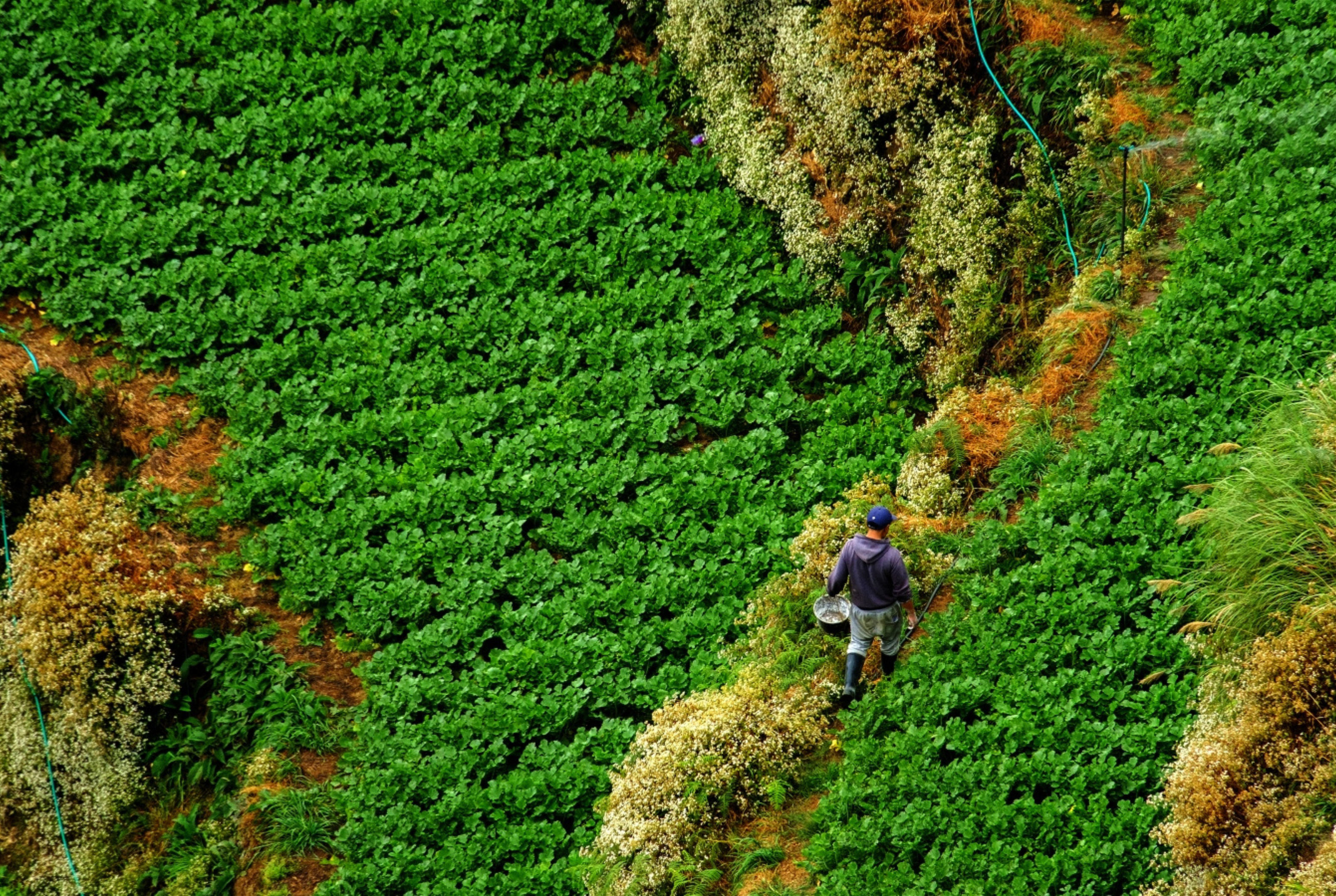Cordillera seeks climate change tech as El Niño crop damage hits P768M

HIGHLAND FARM The farming industry in the Cordillera is exploring new technologies that will help upland vegetable gardens survive extreme weather like the drought in the first months of the year and a high probability of strong rains in the last half of 2024. Many highland farms are carved from mountainsides, such as this garden in Atok, Benguet, shown in this February 2023 photo. —Neil Clark Ongchangco
BAGUIO CITY, Philippines — The Cordillera farming industry is seeking climate resilient technology to make geologically challenged farms more adaptable to extreme weather, after this year’s El Niño dry spell left P768 million in crop losses and because of an anticipated La Niña which may bring prolonged and harsh rainfall, an agriculture official said.
Lawyer Jennilyn Dawayan, Cordillera director of the Department of Agriculture (DA), said on Monday that the government is looking into specialized greenhouses designed to withstand very strong typhoons, given how extreme rains devastated highland crops in recent years.
READ: El Niño damage to PH agri nears P6B
The agricultural sector’s economic contraction of -1.3 percent (P27.8 billion) in 2023 was partly the result of climate disasters that struck mountain farms, Dawayan pointed out at a press briefing.
The region is also exploring genetically modified varieties as well as hybrid rice grains that are suited for droughts, or grains that could absorb excessive rainwater, said Danilo Daguio, DA Cordillera assistant director.
Article continues after this advertisementMaps, research
But Daguio said hybrid grains need to be acceptable to highland farmers. Rice grown by Cordillera farmers is often tied to their culture and rituals.
Article continues after this advertisementThe DA Cordillera office also uses the latest climate tools, including a map drawn up by Benguet State University detailing towns most vulnerable to droughts and to landslides and flooding during monsoons, as well as weather forecasting models, which the agency shares with agricultural communities.
Farmers like corn producer Marivic Raganit of Paracelis town in Mountain Province and coffee and livestock farmer Dick Evasco of Atok town in Benguet said they conducted their own research, and had learned to blend data on weather patterns with traditional Igorot farming knowledge.
Social media platforms, including YouTube, had also been accessed by farmers so they could adjust their planting schedules or seek out “do-it-yourself” food growing techniques such as bottle gardening, said 27-year-old Ryan Palunan, chair of the Regional Agriculture and Fisheries Council.
Terrain
One of the concerns raised by DA was that some Cordillera farmers were “risk takers” who did not heed government alerts about El Niño, so a more aggressive information campaign would now be undertaken in light of a La Niña forecast.
Dawayan said farmlands in the Cordillera are vulnerable to climate change because of the terrain, since many vegetable and rice gardens were carved from the mountainsides.
Ifugao, for instance, is home to the four-century-old rice terraces, which grow heirloom rice called “tinawon” for household consumption.
As of April 29, the drought damaged or destroyed 40,712.24 metric tons (MT) of rice, corn and high-value crops, like Benguet’s salad vegetables, which had affected 11,671 farmers, according to the DA fact sheet.
Daguio said the biggest losses were recorded in Ifugao (17,811 MT or P311 million in Aguinaldo town) and Kalinga (12,196 MT or P263.8 million in the towns of Balbalan, Pinukpuk, Rizal and Tanudan and in Tabuk City).
He said corn (with P638 million in losses) was the biggest casualty among upland commodities, although high-value crops (P1.533 million in losses) were the least affected crops. Damaged rice crops amounted to P127 million.
According to DA, the projected impact on this year’s targeted rice production of 355,774 MT would only be a 1.03-percent (3,653 MT) decline.
But the impact of the drought on the targeted corn production of 171,771 MT had been a 21-percent (36,864 MT) decrease as of April, the agency said.